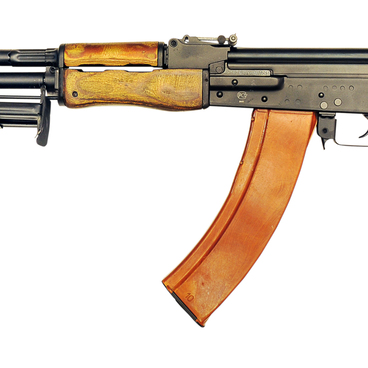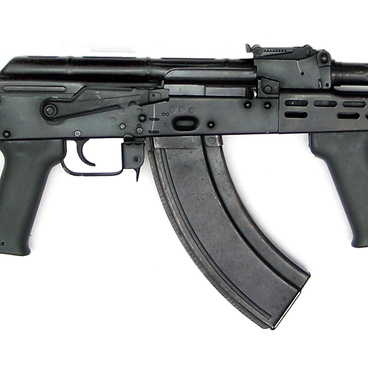The idea to create a small weapon, which would combine the maneuverable qualities of the light machine gun and the power of heavy machine guns, belonged to gun designer Vladimir Fedorov. In the early 1920s, he developed various versions of an infantry machine gun based on his 1916 submachine gun, which could be installed either on bipods — folding stops — or on a light mount.
In the early 1950s, the Main Artillery Directorate returned to the idea of creating a machine gun for a 7.62×54 mm rifle cartridge. In 1953–1958, Tula designers Grigory Nikitin and Yuri Sokolov constructed, manufactured and tested several models. The Nikitin-Sokolov machine gun (TKB-521) passed military tests, and in 1958, the designers managed to produce a series of arms. Later, the military customers demanded to complete the model, however they did not make a final decision on putting it into service.
At the initiative of a former colleague at the Shchurovo proving ground, a representative of the Main Artillery Directorate, Colonel Vladimir Deikin, the Kalashnikov design bureau also joined the competition. In 1960, the sample was ready. According to the results of the tests, the advantages of the new model over the TKB-521 were revealed: the machine gun could work with the ammunition belts of early samples, and it was easier to disassemble and clean. Its joints were less sensitive to water ingress, which is important when crossing rivers with armored vehicles.
In 1961–1962, Kalashnikov machine-gun (PK) and its variations — heavy, tank and APC-mounted — were adopted by the Soviet Army. In 1969, modernized Kalashnikov machine gun (PKM) with a tripod mount and a cartridge box was also put into service.
Edward Isell in his book “The AK-47 Story. Evolution of the Kalashnikov weapons” wrote,
In the early 1950s, the Main Artillery Directorate returned to the idea of creating a machine gun for a 7.62×54 mm rifle cartridge. In 1953–1958, Tula designers Grigory Nikitin and Yuri Sokolov constructed, manufactured and tested several models. The Nikitin-Sokolov machine gun (TKB-521) passed military tests, and in 1958, the designers managed to produce a series of arms. Later, the military customers demanded to complete the model, however they did not make a final decision on putting it into service.
At the initiative of a former colleague at the Shchurovo proving ground, a representative of the Main Artillery Directorate, Colonel Vladimir Deikin, the Kalashnikov design bureau also joined the competition. In 1960, the sample was ready. According to the results of the tests, the advantages of the new model over the TKB-521 were revealed: the machine gun could work with the ammunition belts of early samples, and it was easier to disassemble and clean. Its joints were less sensitive to water ingress, which is important when crossing rivers with armored vehicles.
In 1961–1962, Kalashnikov machine-gun (PK) and its variations — heavy, tank and APC-mounted — were adopted by the Soviet Army. In 1969, modernized Kalashnikov machine gun (PKM) with a tripod mount and a cartridge box was also put into service.
Edward Isell in his book “The AK-47 Story. Evolution of the Kalashnikov weapons” wrote,

